Best Jazz Books, Courses and Gear
Over the years, I've purchased just about every book and online course on the market. The ones pictured here, and listed below, live on a shelf next to my piano. These are the same books I have learned from, and I reference them every week. Some of these books I've worn through multiple times -- they are in a bit of rough shape, as you can tell from the photo.
🎹 Unlock Your Jazz Potential
Have you been struggling to learn to play jazz? Maybe you're feeling confused by music theory or intimidated by improvisation. Or perhaps you're a classically trained musician who wants to try something new but doesn't know where to start. I've been there too, and that's why I created this online course.
Each lesson is designed to be short and sweet - just 5 to 10 minutes - and focuses on one specific technique at a time. By breaking down these smaller concepts and applying them to your daily practice, you'll be amazed at how quickly you can master the fundamentals of playing jazz.

If you don't buy anything else, make it this book. -- Jeremy Siskind is one of the most progressive jazz pianists teaching today. As a student of the great Fred Hersch, Jeremy has built a career teaching his unique approach to solo piano playing. Perhaps no book in my library has done more for my playing than this book.
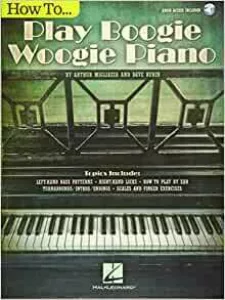
This comprehensive instructional book takes students through a step-by-step process of learning both the basics and the more advanced techniques of the style so that they can eventually become their own teachers. Based on Arthur Migliazza's uniquely systematic method of instruction, and over 19 years of experience teaching students of all skill levels, this book covers everything from left-hand bass patterns, right-hand licks and essential chords, to turnarounds, intros, endings, and even a chapter on how to play by ear.
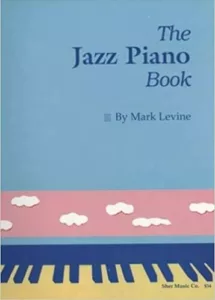
This is the classic book to begin learning how to play jazz piano. It's not meant for beginning piano players, but serves as a rather comprehensive guide to the fundamental aspects of jazz theory concepts.
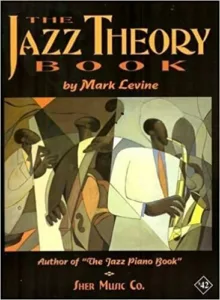
This book is a more comprehensive version of The Jazz Piano Book above. It's written for all instrumentalists, not just pianists, and covers the theory at a deeper level.
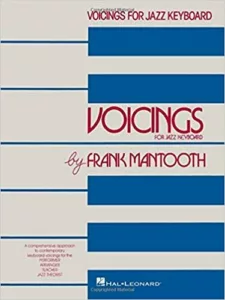
This book is a classic treasure amongst jazz pianists. It's not like any other book on voicings that I've read. If you are into modern jazz, especially fourth voicings, there's no better book than Frank's.
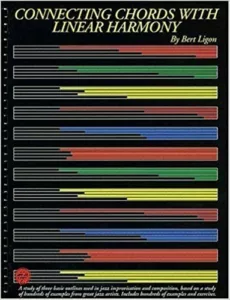
Many jazz pianists get stuck thinking vertically about chords and voicings -- that was certainly true for me. Bert's book guides you to think about harmony through melodic lines by applying 3 linear exercises across major and minor ii-V-I chord progressions.
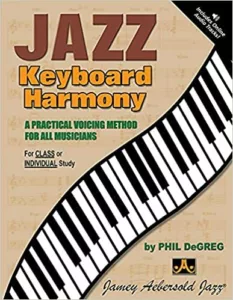
Phil DeGreg's book is focused mostly on keyboard voicing techniques. It serves as a method book as well as a workbook. It's quite comprehensive in its application of various types of voicings and movements through chord progressions.
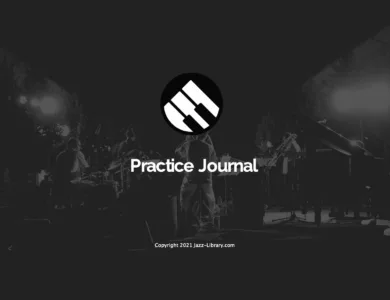
The Jazz-Library Practice Journal is a set of templates designed to encourage healthy, robust and methodical practice sessions.
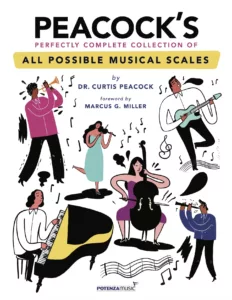
This is the most outrageously comprehensive book on scales ever written. By Curtis Peacock. This book is the product of three years of dedicated research and analysis of all known musical scales and theory of scales. For three years, I literally dreamed about scales every night! It is a "perfectly complete collection" because it contains every possible pentatonic (five-note), heptatonic (seven-note) and octatonic (eight-note) scale! It's also my arrangement which includes technical analysis as well as historical context and my own personal organization from the perspective of a performer and a composer.
We may earn a commission for recommending these and other products. This does not affect the price you pay. Thank you for supporting us!
By using Jazz-Library, you agree to our Cookies Policy.